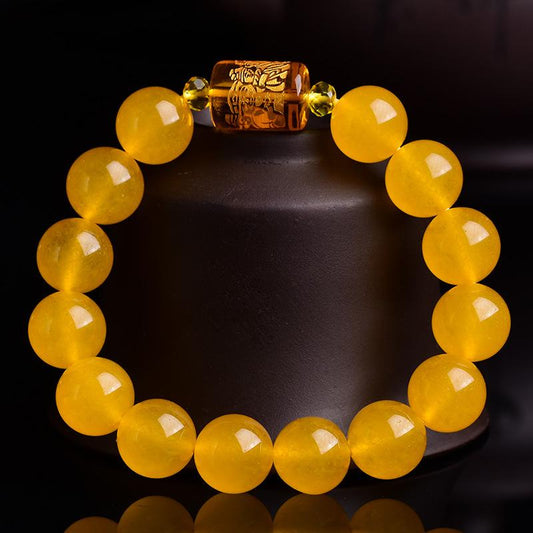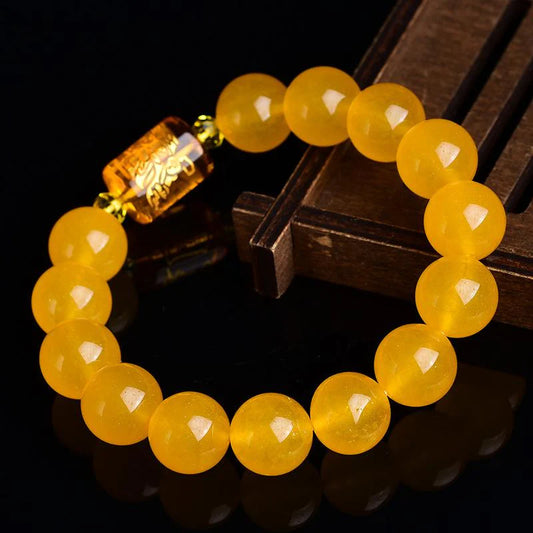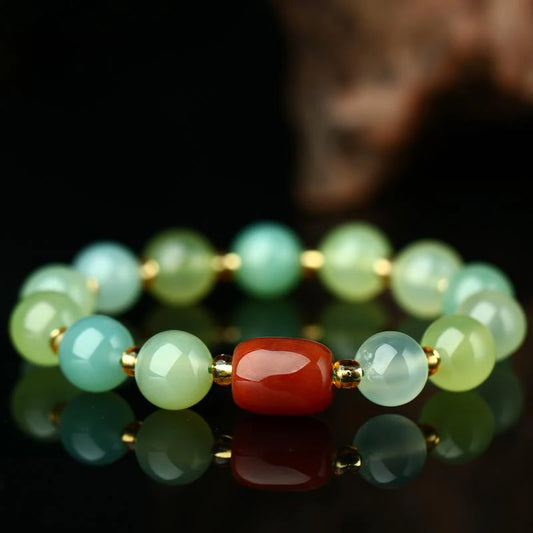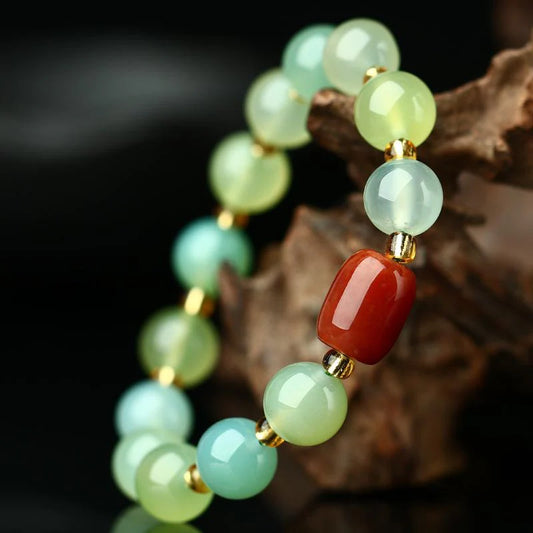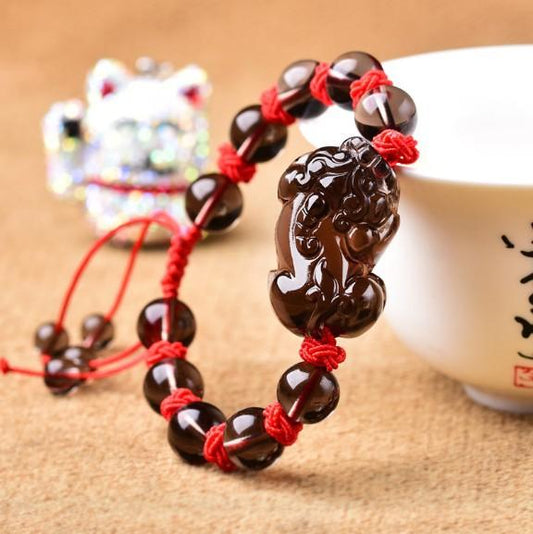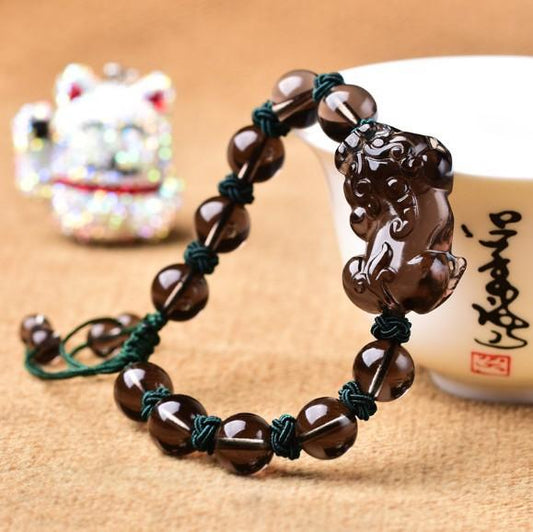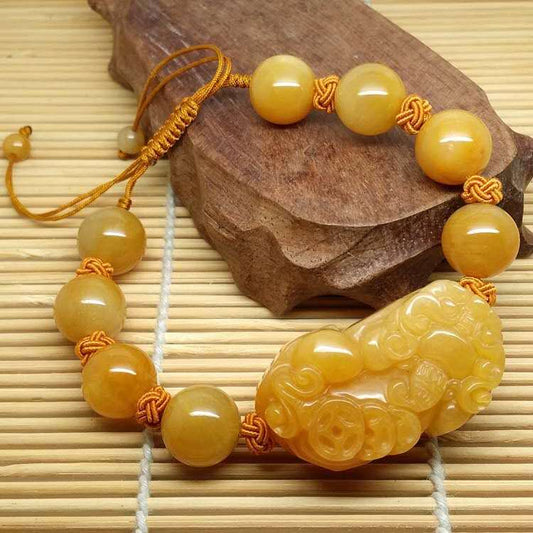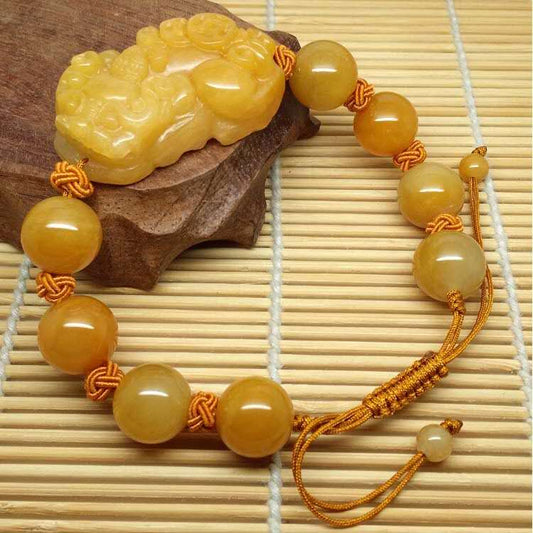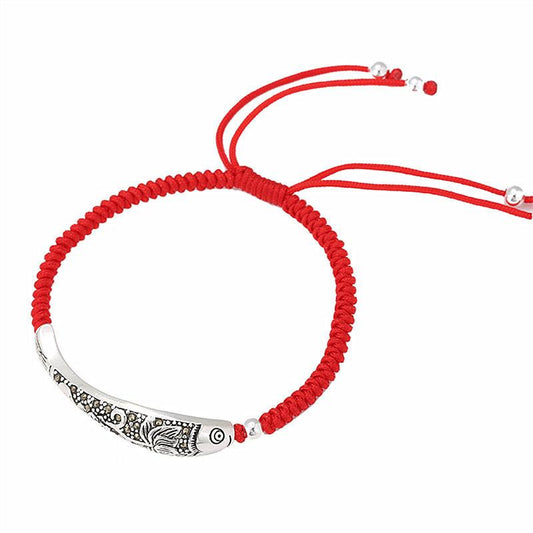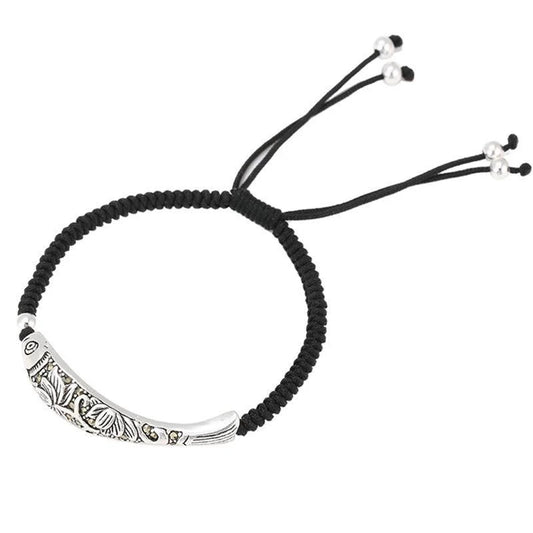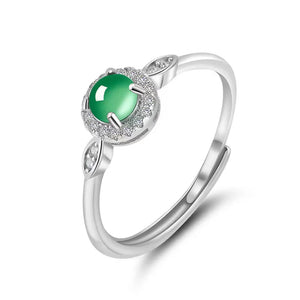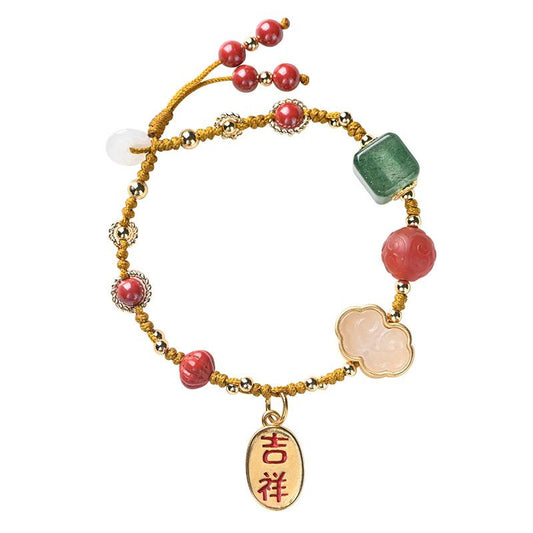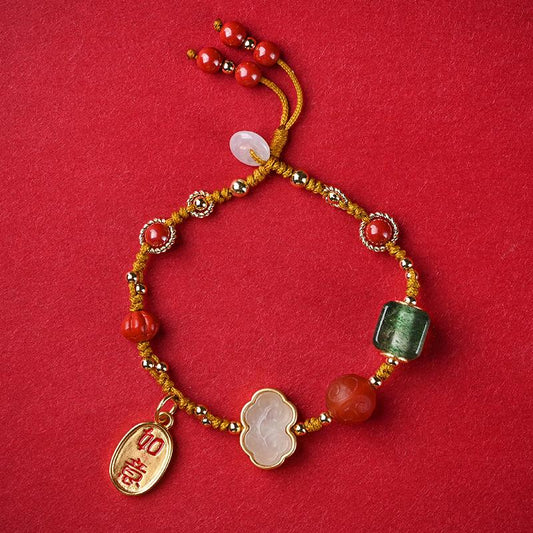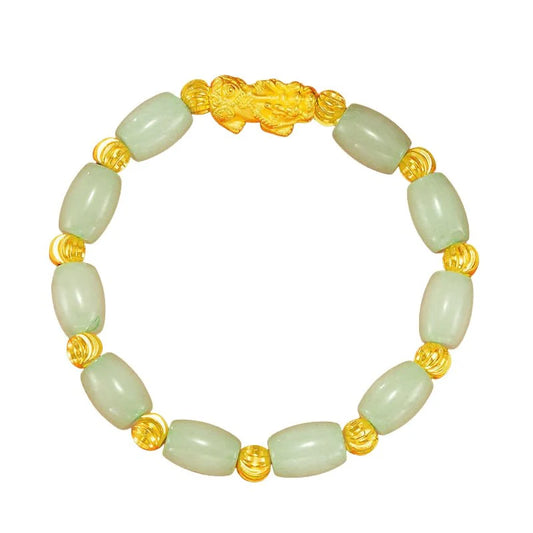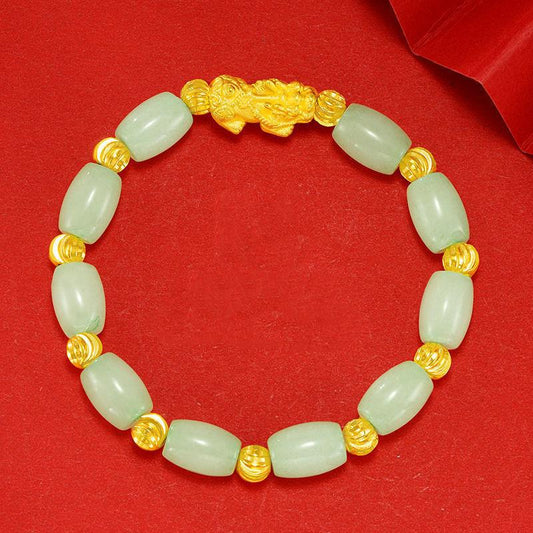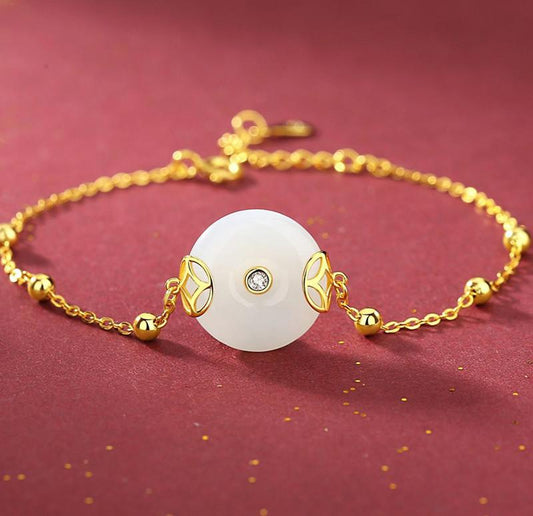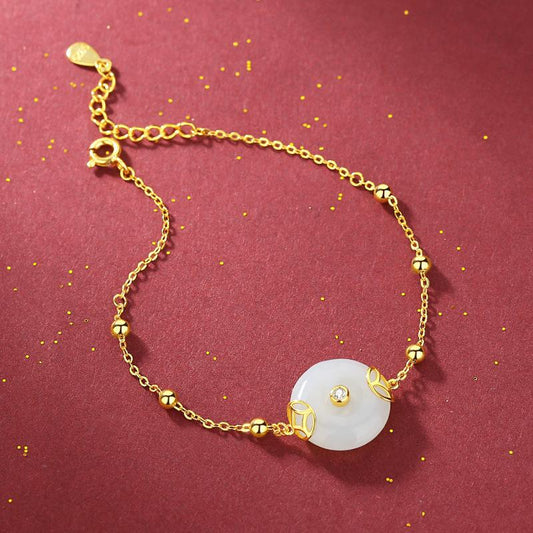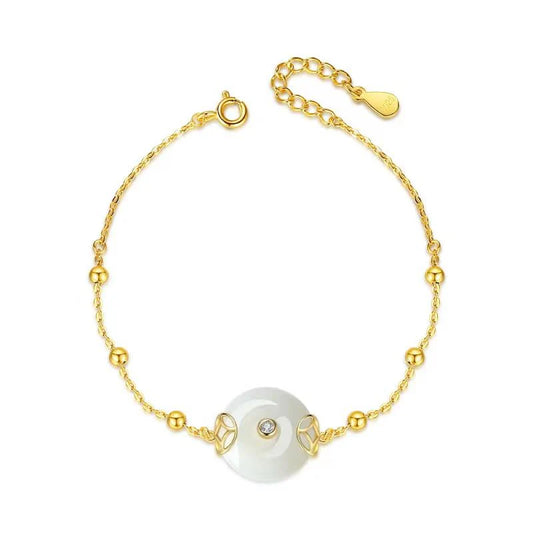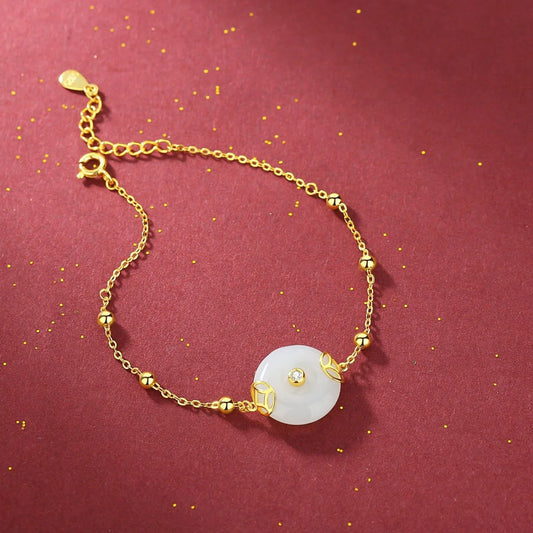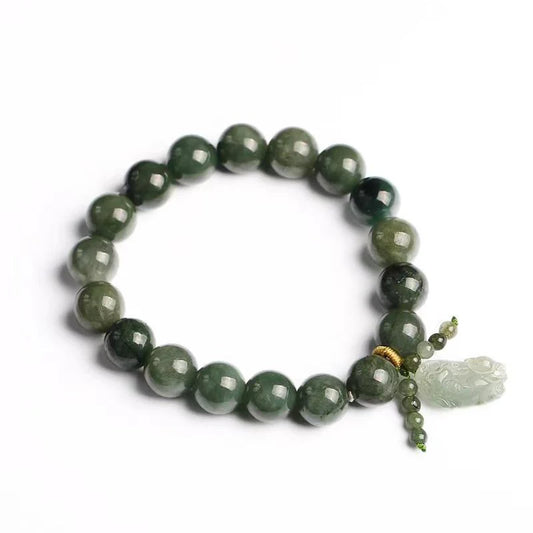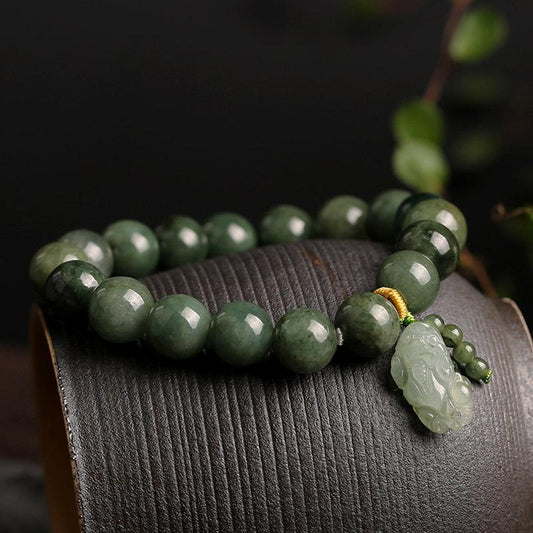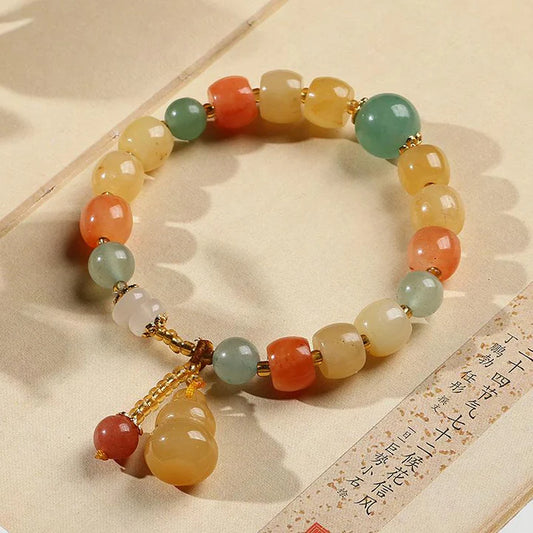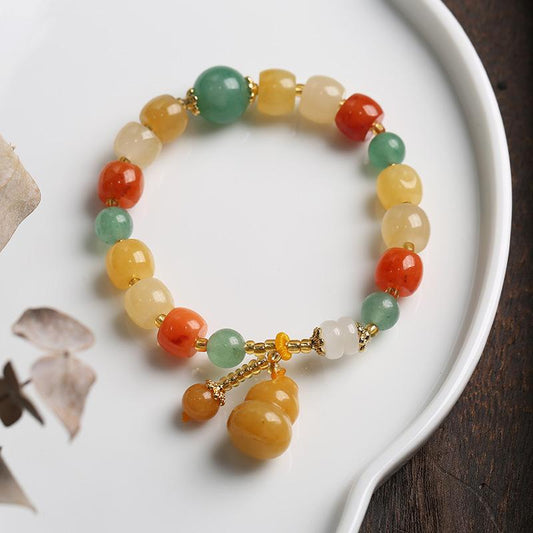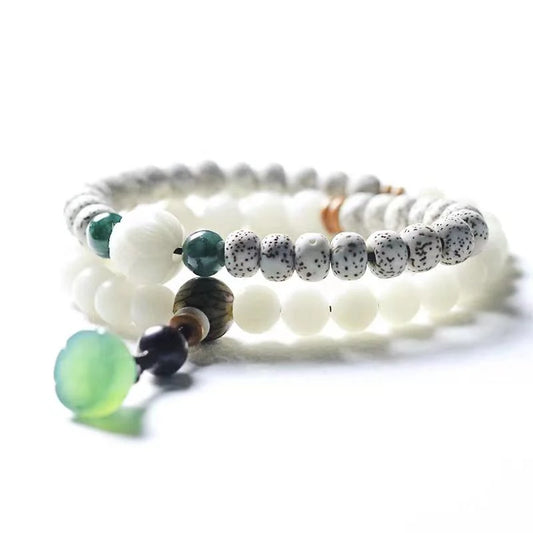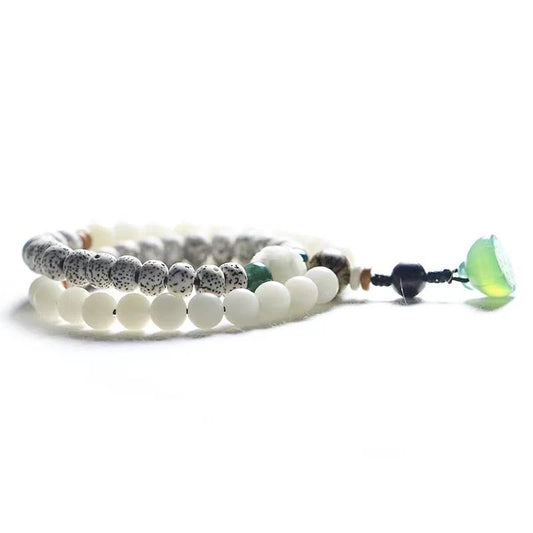Jade has been highly regarded in Chinese tradition for its representation of harmony, eternity, and virtue. With a surge in popularity of green gemstones, jade offers a sophisticated choice for engagement rings. Discover how to select the perfect jade center stone for your engagement ring and how to properly maintain your jade jewelry.
Shop Jade Stone Jewelry Now >>
Jade Stone Ring Meaning & Energy
Jade, commonly associated with the color green, is a potent healing stone for the heart. Its strong energies can be instantly felt when touched or held close to the heart. By radiating love and balance, Jade works to soften the burdens one may carry. With its nurturing heart, Jade brings healing, rejuvenation, and support. Its steady and abundant energies flow from the heart, bringing physical, emotional, and spiritual healing. Working with Jade allows for a genuine connection from heart to heart, both with the stone and with the love of the divine.
Related Article: Feng Shui Jade Types, Benefits, Meaning and Healing Properties
Jade rings are more than just a trendy fashion statement, they also hold a deep connection to ancient wisdom and beliefs. Let's explore some of the significant meanings attached to jade rings:
Longevity and Health
Historically, jade has been associated with enhanced health and longevity. Chinese emperors of the past consumed powdered jade in their search for eternal life, although this is not a recommended method in modern times. However, wearing a jade ring is still thought to contribute to overall well-being and balance.
Wisdom and Clarity
Jade holds significant cultural meaning, often representing wisdom and clarity of thought. The act of wearing a jade ring is believed to augment decision-making skills and offer insight into intricate situations.
Protection and Good Fortune
Jade is known to protect against negative energy and bring good luck to those who wear it. A jade ring can act as a powerful talisman, shielding the wearer from harm and attracting positive vibrations.
Balance and Harmony
Jade's calming green hue is commonly linked to balance and harmony. A ring made of this precious stone can serve as a visual cue to uphold equilibrium in personal and social spheres.
Love and Fidelity
Jade rings have been historically used in certain cultures as symbols of love and commitment. The exceptional durability of jade symbolizes the lasting strength and longevity of a relationship, making it a meaningful choice for expressing one's devotion.

Is All Jade Green?
Jade is most commonly recognized as a vibrant green stone, but its color spectrum also includes lavender, yellow, white, blue, and black.
"Imperial Jade" is the popular and valuable translucent, pure green jadeite from Myanmar (Burma). It is often seen as the archetype of what a jade gemstone should look like by consumers, especially in Western nations.
Additionally, there are other colors of jade that have a strong following among enthusiasts. This includes lavender jade, which is the second most popular color. Its delicate and feminine appearance makes it a desirable choice, especially when combined with pink and purple gemstones such as sapphires or tanzanites.
In the realm of Chinese history, mutton fat jade has always been highly valued and coveted. Despite its popularity among Chinese buyers, black, white, and colorless "ice" jade are typically not used as central stones in rings. Instead, they are often seen as hololiths, carved from a single stone, and used in the creation of wedding bands or bangles.
In China, the "mutton fat" jade has long been highly valued, with its creamy white appearance. This type of jade is still beloved by Chinese consumers, although black, white, or colorless ("ice") jade can also be found, typically used for traditional pieces like wedding bands or bangles that are carved from a single stone.
Grade A Jade Wealth Silver Ring(Adjustable)Stone Weight: 1.2g |
Three Benefits of Wearing Jade Jewelry Everyday
An Elegant and Versatile Accessory
The options of jade jewelry are endless, suitable for any style. From minimalist to bold, jade blends seamlessly. For an evening ensemble, a green jade necklace is a perfect pairing, and for a more casual look, a black jade bracelet adds a touch of elegance.
A Piece That Combines Beauty and Well-Being
Jade jewelry offers more than just aesthetics, as this natural stone is renowned for its benefits in lithotherapy. It promotes a calm mind, reduces stress, and encourages meditation, making it a simple yet effective daily practice for connecting with soothing energies.
A Timeless Heirloom
Jade is known for its enduring strength, preserving its stunning appearance as time goes by. It holds a special place in family heirlooms, carrying cherished memories and symbolic meaning. When giving the gift of jade jewelry, you are also passing on a precious legacy.
Why Choose a Jade Engagement Ring?
Over the past few years, there has been a rise in the popularity of colored gemstones in the bridal jewelry industry. These gems have been seen on celebrities on the red carpet, such as J. Lo wearing a stunning green diamond, as well as on famous royals like Kate Middleton with her blue sapphire engagement ring. It seems that colored stones are becoming a more popular choice for engagement rings, potentially reflecting a shift in generations or the growing awareness that diamonds are not as rare as perceived. In fact, many colored gemstones are even rarer than diamonds, including the beautiful Jade.
Throughout history, jade has been a popular choice for jewelry due to its beautiful hues, sleek surface, scarce availability, strength, and symbolic connections to well-being and prosperity. These same qualities still hold true for jade today, making it an exceptional yet often overlooked choice for engagement rings. However, this perception is gradually shifting.

How to Choose a Jade Engagement Ring Stone
When evaluating jade, the three main factors to consider are listed in order of importance.
- Texture
- Color and tone
- Translucence and clarity
Other factors to consider are the stone's shape, polish, and size.
Examples of Green Jade Color Names
Texture
When examining jade, its texture can be evaluated by the presence of patterns or inclusions that disrupt the evenness of its color. These disruptions may manifest as veins, specks, spots, clouds, or blotches and are generally considered less desirable in high-value gemstones. However, there are buyers who may appreciate these color variations if they appear symmetrical and resemble an intentional pattern.
Color and Tone
When considering the quality of jade rings, a notable feature to look for is the electric green hue, giving the appearance of a water-filled stone. This hue, also referred to as tone, is determined by the shade of the color, either light or dark.
Different shades of jade come in a variety of names, including "apple," "mossy," and "flower green." It may be challenging for non-experts to differentiate between these terms. Here are some frequently used descriptors for green jade color, often based on specific shades.
Light Apple Green: Lighter green, spotted or scattered color; opaque
Dark Apple Green: Translucent with overall even color
Plain Green Melon: Heavy texture; scattered color but translucent
Glassy: Almost transparent but with weaker color
Spinach: Darkish green; somewhat transparent; uneven tone; oily texture on the surface
Moss-In-Snow: Green color with white base; opaque; even color with good contrast
When discussing "imperial jade," it is often compared to the color "emerald green." However, this is not entirely accurate. While top-quality emeralds may have a slight blue undertone, imperial jade is a purer green, with a balance of blue and yellow tones. In fact, imperial jade contains no more than 20% blue, making it a uniquely vibrant and balanced shade of green.
Translucence and Clarity
To gauge the clarity of a jade stone, observe how light travels through it. If light is visible through the stone, it can be classified as translucent. Furthermore, look for any visible veins or inclusions. High-quality jade stones typically have high translucence and a vibrant green hue.
The stone can be classified as opaque if no light is able to pass through it.
Shape, Polish, and Size
The optimal form for a jade engagement ring stone is an oval cabochon, although there are other cabbed shapes available such as marquises, hearts, and pears. The oval cabochon can be compared to the round brilliant of a diamond engagement ring stone, setting the benchmark for excellence.
While the average consumer may not prioritize polish when buying gemstones, it is crucial to carefully consider this aspect when purchasing jade. In cabochons, polish greatly affects the stone's brilliance, much like how it does in faceted stones. A polished cabochon of exceptional quality will have uniform light reflection, resulting in a stunning luster without any flat spots.
Different cultures have varying preferences for the size of jade gemstones. While US consumers tend to prefer larger stones, Chinese consumers typically prefer smaller stones. This is a reflection of cultural differences.
Pixiu Green Jade RingWeight: 3.7Gram |
Buyer Beware: Unclear Jade Grading Standards
The process of jade grading has historically been shrouded in secrecy, with criteria being passed down from generation to generation among jade trader families and kept hidden from consumers.
Gain a better understanding of the jade market with our enhanced transparency. The industry standard grading system evaluates jade based on the treatments it has undergone.
"A" Jade: Natural, untreated jade (jadeite or nephrite); wax coating acceptable
"B" Jade: Bleach and polymer treatments
"C" Jade: Contains dye
"B+C" Jade: Dye and polymer treatments
Be mindful of the fact that this system may have variances, such as those listed below:
Type A: Natural, untreated jadeite (only a traditional surface wax used for centuries is accepted)
Type B: Bleached and polymer impregnated jadeite
Type C: Bleached, dyed and polymer impregnated jadeite
Type D: Dyed jadeite, no polymer (almost always pre-polymer era)
While both systems use "A" and "B" type jades to mean the same thing, "C" type jades may differ in meaning depending on whether they have been dyed only or bleached, dyed, and treated with polymers. It is important to ask your vendors to clarify their grading systems.
When it comes to fine jewelry, be sure to only purchase "Type A" or untreated jade for the highest quality.

How to Care for a Jade Engagement Ring
If your engagement ring has a natural jade stone, specifically "Type A" (untreated), you can safely clean it with an ultrasonic cleaner. Be sure to confirm that any additional gems in your ring are also suitable for ultrasonic cleaning.
Follow proper cleaning instructions for treated jade stones, using a soft toothbrush and warm, soapy water once a week to ensure a lifetime of lasting beauty. Consult our jade care guide and gemstone jewelry care guide for additional recommendations.
Storing Your Jade Ring
When storing your jade ring, it is recommended to use a soft cloth pouch or place it in a separate compartment in your jewelry box to avoid potential scratches or damage from other gemstones. Additionally, take care to protect it from direct sunlight as prolonged exposure to heat and UV rays can cause fading or changes in its appearance over time.
Jade rings represent both ancient customs and contemporary sophistication, making them a treasured addition to any jewelry lineup. By learning the proper way to select and maintain your jade ring, you can truly appreciate its magnificent allure and cultural importance, guaranteeing it remains a timeless and meaningful adornment. These exquisite pieces offer a glimpse into a rich history while promising a sustainable and profound future, whether inherited or worn as a symbolic engagement ring. As you explore the process of choosing and maintaining your jade rings, the following guidelines will ensure your investment continues to enchant and hold personal value.

